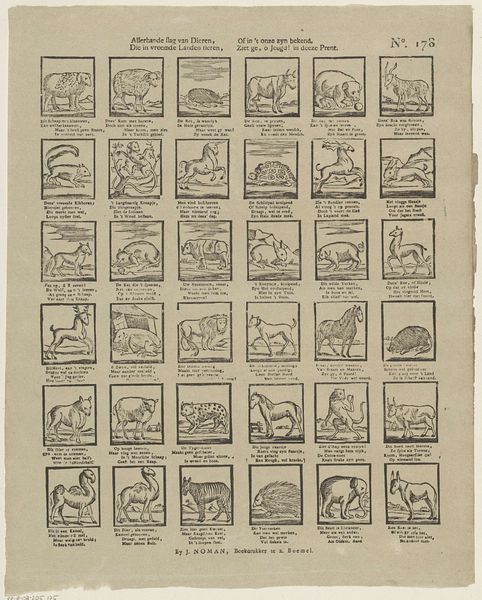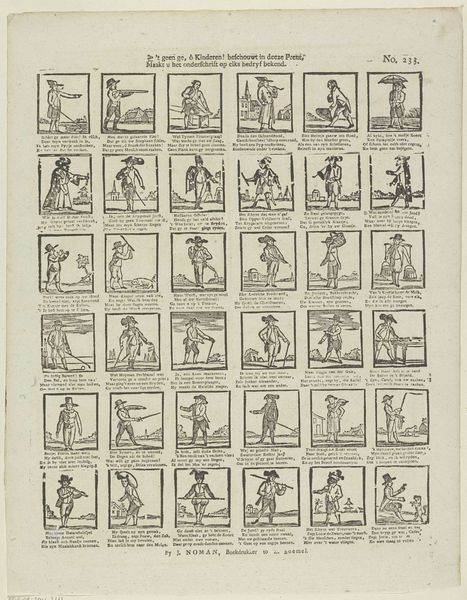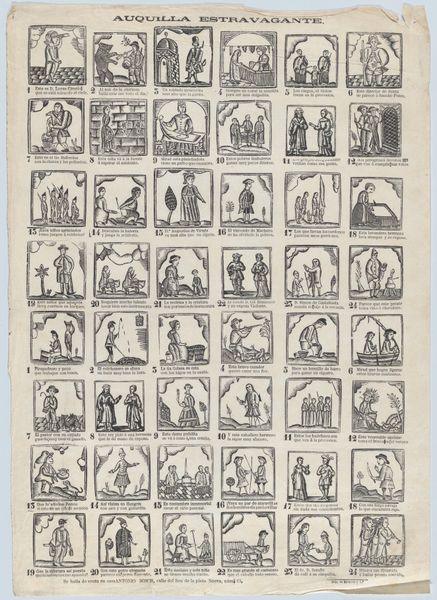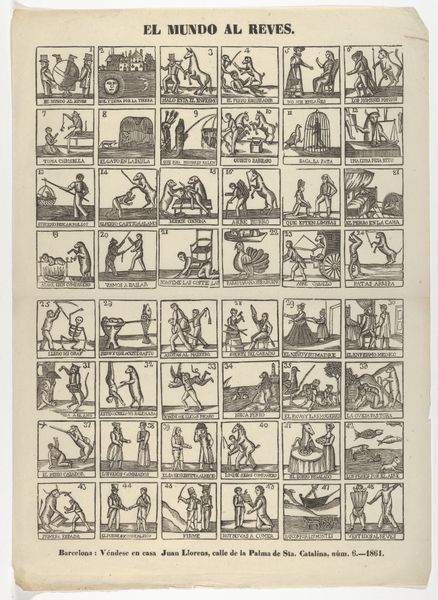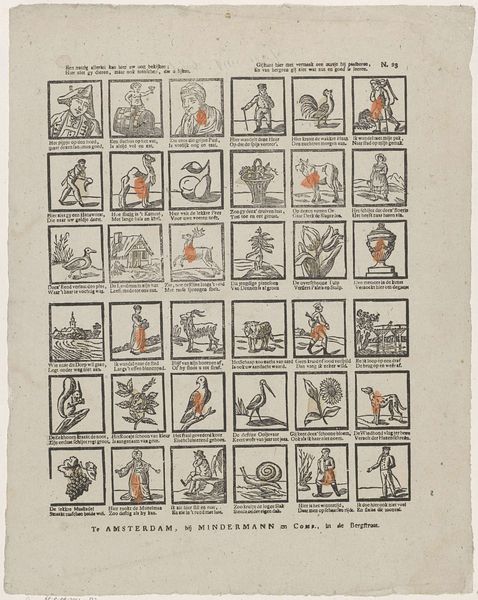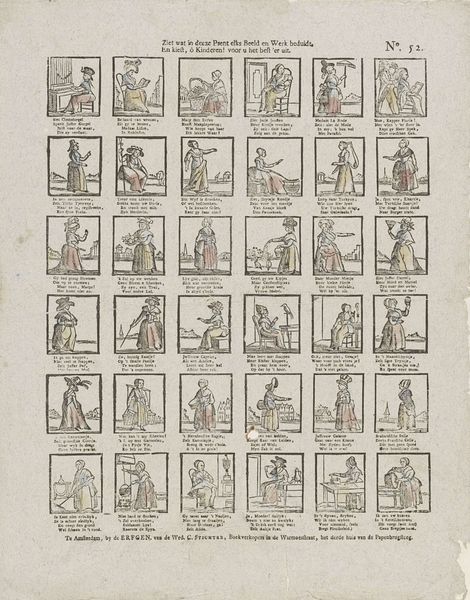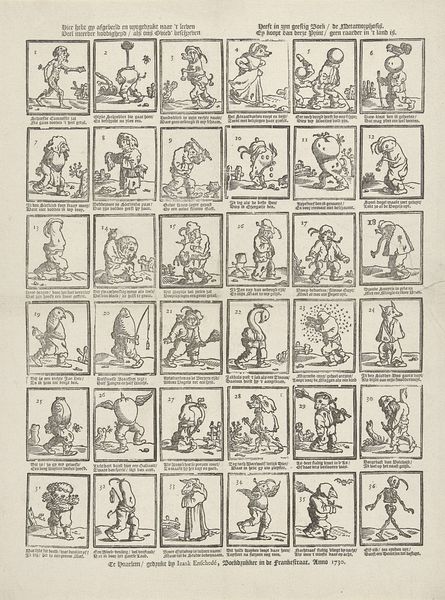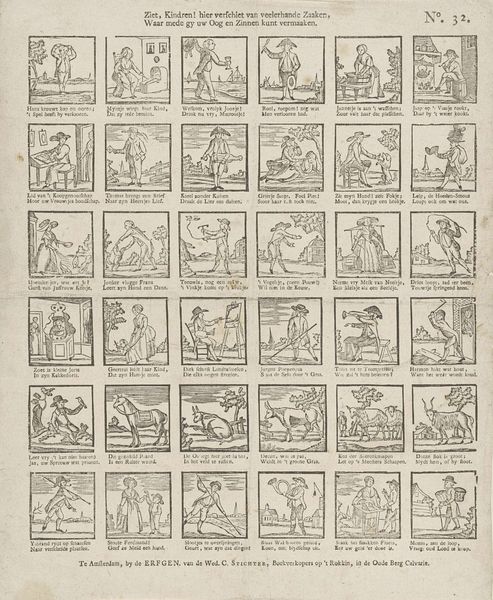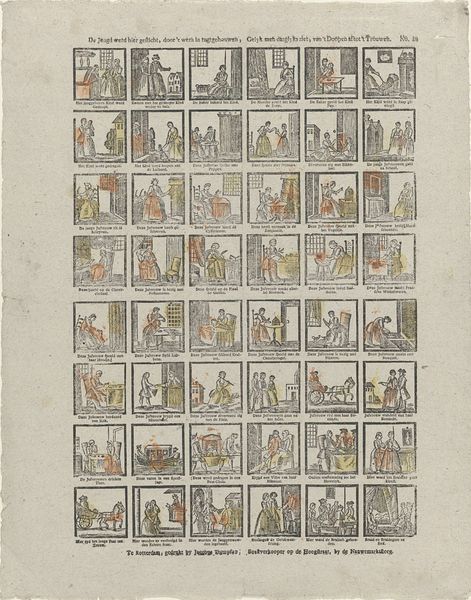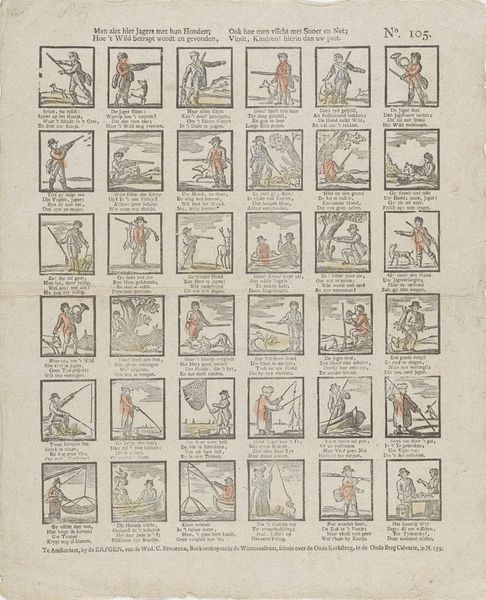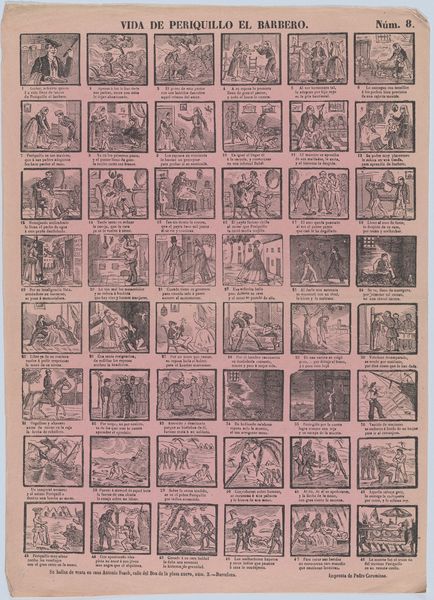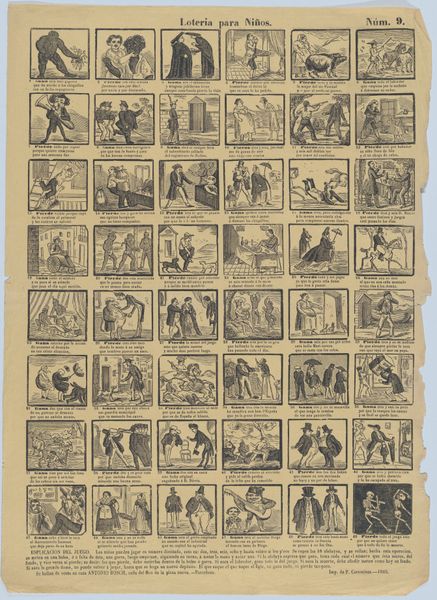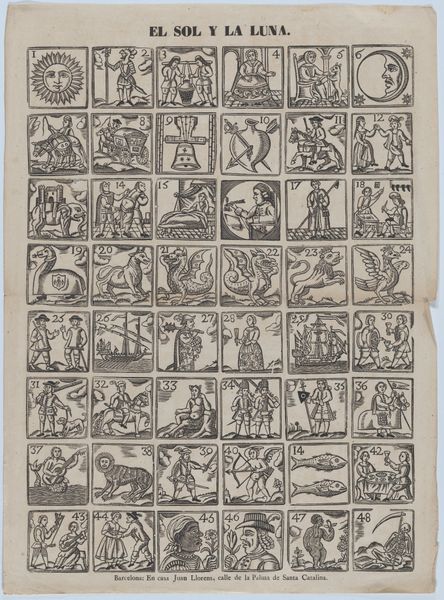
Ziet, kindren! wat men u wil leeren, / Wilt ge in de waereld wel verkeeren, / Daar deeze prent het zelf u zegt, / Doet niets verkeerd, maar alles recht 1715 - 1813
0:00
0:00
graphic-art, print, engraving
#
graphic-art
#
narrative-art
#
dutch-golden-age
# print
#
figuration
#
line
#
genre-painting
#
engraving
Dimensions: height 405 mm, width 325 mm
Copyright: Rijks Museum: Open Domain
Curator: "Ziet, kindren! wat men u wil leeren, / Wilt ge in de waereld wel verkeeren, / Daar deeze prent het zelf u zegt, / Doet niets verkeerd, maar alles recht." It translates to "Look, children! what one wants to teach you / If you want to live well in the world / This print itself tells you / Do nothing wrong, but everything right.” This engraving presents a grid of small narrative scenes. Editor: Yes, it’s quite unusual to see so many individual vignettes compiled together. They remind me of something between a comic strip and a page of proverbs. How might we interpret all these tiny stories as a whole? Curator: Notice how each image operates almost like a hieroglyph. Each little scene seems intended to carry a weight of meaning beyond the immediate image. It’s about constructing a moral language, a shared understanding transmitted through repeated visual cues. Think of it as visual vernacular. Each image becomes a symbol contributing to the broader moral message of the whole composition, the title’s text working as a keystone tying each vignette. What common symbols do you recognise? Editor: Well, I see animals behaving like humans, several images depicting consequences, a lot of working-class people depicted in their workshops. Does the frequency of these images tell us about their relative importance? Curator: Precisely. Consider the recurring image of tradesmen – the shoemaker, the smith. It reflects a cultural memory that prized craftsmanship, diligence. Even negative imagery carries weight. These reflect behaviours needing to be avoided; they function didactically to instruct about moral behaviour in society. Editor: So, even in what feels like a simple engraving, there’s a really complex layering of symbols at play. The narratives themselves hold a symbolic weight? Curator: Absolutely! It is about teaching people morals, using visual language, so the next time one encounters these images, you have already developed an understanding for them. That is why cultural memory plays a pivotal role in iconography. Editor: Fascinating. I'll definitely look at art with more awareness now. Curator: As will I. The engraving's blend of storytelling and morality makes it quite impactful.
Comments
No comments
Be the first to comment and join the conversation on the ultimate creative platform.
